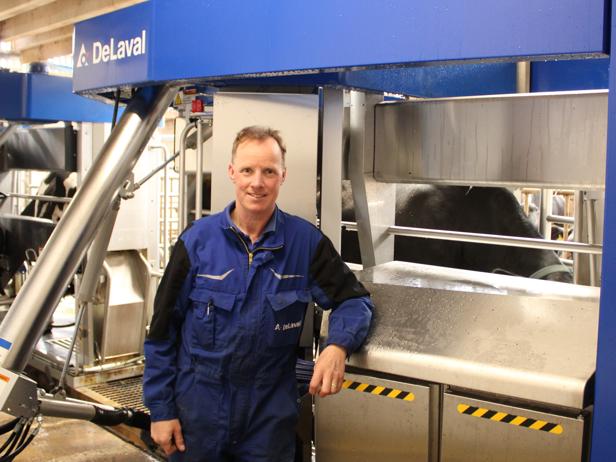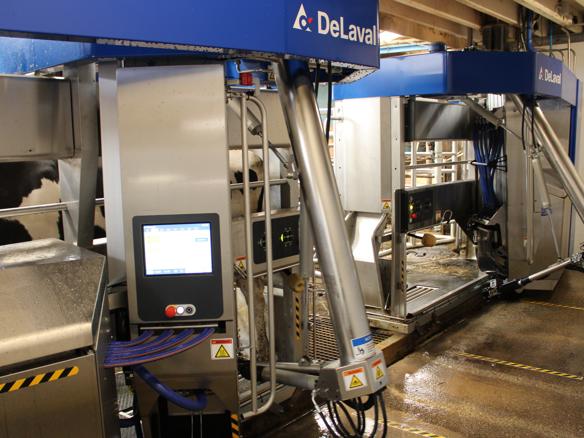Home
Learn
Customer testimonials
Jim Booth
Jim Booth

Jim Booth - Clitheroe, Lancashire
Farm location
Lancashire
Herd size
140
“The robots make sense for the next generation. Technology is becoming cheaper, whilst labour costs are increasing, and good staff are becoming rare. I can see other families wanting to invest and provide a more attractive dairying model for themselves and their children,”
Jim Booth is a second-generation dairy farmer who embraced technology by becoming an early adopter of DeLaval milking robots. Eleven years on and he has updated his robots, becoming one of the first farmers to make the shift from old to new. He replaced two DeLaval VMS Classic robots with two new V310 models and immediately saw increases in yield, reductions in somatic cell count (SCC) and reduced milking times.
Mr Booth, his wife Heather and son Jack farm near Clitheroe, Lancashire. Their herd of 140 Holsteins is grazed on 340 acres of which the family own 170. “The herd is out from April to September. It is very wet farm in a wet part of the country, so we keep them in to protect the grass when the ground is very soft,” he explains. The herd use a grazing gate which gives each cow permission to graze once she has been milked. “We are planning to put more tracks in, and the gated system works well. Since we have installed the new robots average milkings have increased from 2.8 to 3.6 per day,” he says
The choice to upgrade the robots came easily when the efficiencies were explained. “We have already seen in excess of twelve percent increase in yield compared to the old robots. This equates to approximately four litres per cow per day, so we are up to nearly 39 litres now,” he says. However, increases in individual cow milk yield was not the only benefit the new robots offered. “When we had the old robots, I was milking 114-116 and this increased at times to 120-122. However, when more were in milk there was no more milk in the tank because there was no more capacity for the robots to milk,”. The two Classic robots had an optimum milking capacity of 114 whereas the new V310 robots can manage 125 plus. “This was probably the main reason to upgrade. I realised I could achieve ten percent more output and easily have over 120 in milk at one time,” he says.

The teat preparation provided by the new robots has led to SCCs reducing from 150 to 120. A separate cup stimulates each teat to prepare it before milking. “It takes a little longer than some machines, but the teat stimulation leads to faster milk let down which speeds up milking. We have also seen a drop in mastitis cases which I believe is due to the way the new robots prepare and attach,” says Mr Booth.
The V310 has been supplied with DeLaval’s Herd Navigator heat detection unit. The progesterone testing system takes a sample from the cow whilst she milked to keep a constant check on whether she is in heat. It also signals when a cow is in calf. “We had DeLaval activity collars for eight years to help with heat detection. Rather than upgrade these it seemed logical to opt for a robot that could manage heat detection too. It is less work, and we receive more data,” he says.
An all-inclusive service contract with the new robots means that he does not have to budget separately for parts, servicing, chemicals, and consumables. “We pay a monthly amount which includes everything apart from the labour should there be a breakdown. It gives me peace of mind and makes managing my costs much easier,” he says. He also benefited from the trade in value of his old robots. “They had worked 24 hours a day for over 11 years which is approximately 10,000 hours, yet I received a significant amount back for them, against the cost of the new ones. This was another big factor in realising the economies of making the switch,” he explains.